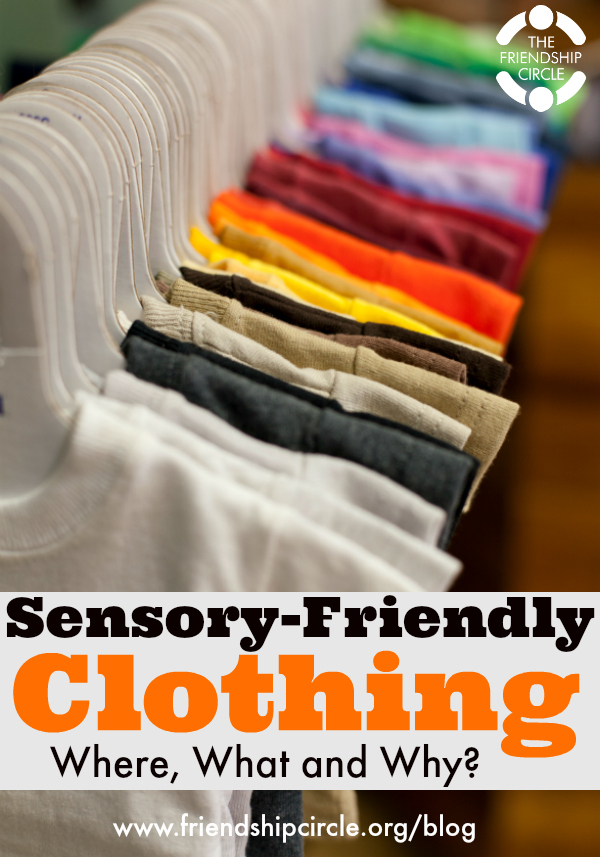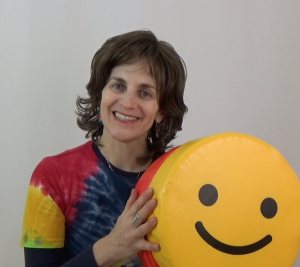
Products 
A Guide to Sensory-Friendly Clothing
Sensory-Friendly Clothing: Where, What and Why?
In some instances, it’s the layer right next to your skin and in others it might be a layer or two away, but either way, sensory-friendly clothing can make the difference between a great day and a not-so-great day for individuals with sensory differences. Whether you know someone or you yourself have sensory clothing needs, finding the right clothing can be a lifesaver. Keep in mind that younger kids won’t mind sticking out too much but older children, teens and adults may prefer items that blend in. Also be attentive as to whether you have a sensory seeker (loving weight and pressure), a sensory avoider (no seams, tags or too much pressure), an under responder (needs compression and weight to stay alert) or an over responder (needs soft items to calm and relax). You don’t need to be a scientist to figure this all out. Your child will let you know! Let’s start from the inside out and look at some sensory-friendly items that may just make your day.Bottom Layer
This would be clothing that touches the skin. The skin receptors (and we have millions of them) are very sensitive to touch and even more so in those individuals with sensory processing disorders, Autism and ADHD. You may want to start with underwear that eliminates tags and seams. Most sensory sensitive individuals do not want any seams or tags near their skin. Careful selection of underwear can mean a day free of irritation. Next comes an undershirt or t-shirt. If you can find one that hugs and is tag less, then you can have all day compression, meeting the needs of your sensory seekers, under responders and over responders. Don’t forget the toes! Kids with sensory needs do not like “worms” (seams) against their feet. SmartKnit kids has a great line of socks (and underwear) for those needs!Middle Layer
Consider shirts and pants that eliminate itch and bulk. In general you want to stick with lightweight compression clothing that provides good proprioceptive input with comfort. For a shirt, you can choose short or long sleeves and wear right against the skin and under another layer such as a school uniform shirt. Cotton is best, but cotton with stretch is even better. If you don’t need compression and just want tag less or seamless, consider TeresKids which provides a great line of just such clothing. Though girls often love skirts, if your daughter has sensory sensitivity, consider leggings (short or long) to keep her covered well and able to run, play and jump. Boys love pockets and places to keep their fidgets, so think about that when looking for pants.Top Layer
This would be the layer where you consider something like a hoodie or vest, this is where you can really provide some terrific sensory input. You can choose a savvy denim vest; mesh vest, compression vest or weighted vest. Using compression and weight on the outer layer allows you to use it as needed and remove it as needed. This means you can prevent accommodation and get better results.Accessories
Accessories are just fun and when it comes to sensory needs they can be just the touch you need. Consider sensory sleeves for kids who need compression on their forearms (great for handwriting and sensory input). You might also want to consider sensory mittens, weighed cap, earmuffs, suspenders or a scarf. Weight can waken up a sleepy nervous system and it can relax an over stimulated one. Try one weighted item at a time and using it when calm or concentration is most needed.Remember to keep in mind your child’s style and comfort needs and with some forethought, you can be sure to help them dress for success!
Related Articles:
8 Online Stores To Purchase Sensory Friendly Clothing 11 More Tips For Dressing Your Sensory-Sensitive Child 18 Places to Look for Sensory Friendly Clothing 10 Tips for dressing a sensory sensitive childLike this post? Pin it for later here:




